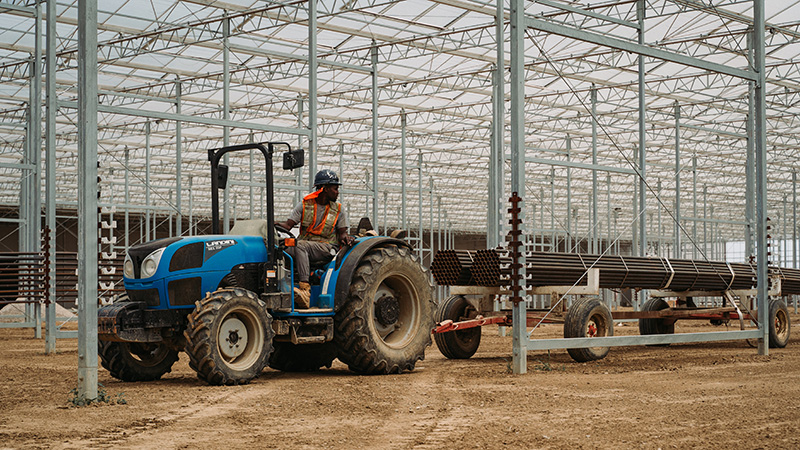How You Can Plan Ahead for Disease Control in 2019
 Spring is the busiest time of year for any grower, but for those who are able to plan ahead for disease control, that’s one less thing they have to worry about. Greenhouse Grower recently reached out to Aaron Palmateer, Ph.D., Senior Technical Service Representative for Bayer, to get his take on what growers can expect in terms of disease pressure in 2019, and how they can prepare.
Spring is the busiest time of year for any grower, but for those who are able to plan ahead for disease control, that’s one less thing they have to worry about. Greenhouse Grower recently reached out to Aaron Palmateer, Ph.D., Senior Technical Service Representative for Bayer, to get his take on what growers can expect in terms of disease pressure in 2019, and how they can prepare.
Greenhouse Grower (GG): What are some of the diseases that greenhouse growers should be particularly mindful of in 2019?
Aaron Palmateer: Plant pathogens have evolved to persist and survive harsher conditions than typical greenhouse environments, so they can be very difficult to eradicate. Many growers start the year by reviewing records and recollections of what occurred on crops in previous years. This historical knowledge can help inform preventative measures moving forward, as there is a high potential of seeing the same disease on the same host — and possibly on other closely related hosts.
The answer to this question is never straightforward. There are just too many plants and too many diseases. Some of the more common diseases include bacterial leaf spots (Pseudomonas and Xanthomonas) and soft rots (Dickeya and Pectobacterium), along with fungal leaf spots (Alternaria, Anthracnose, Cercospora, Myrothecium, and Phyllosticta). Botrytis, Phytophthora root/crown rot and aerial blight, Pythium root rot, mildews (powdery and downy), and rusts are also prevalent, along with Fusarium. Be on the lookout for Fusarium root, crown, stem rots, and the dreaded vascular wilt — as well as the infamous viruses and occasional outbreak of foliar nematodes. Never a dull moment!
GG: Are they any diseases that you’ve heard about growers having more difficulty in managing in recent years? If so, what steps can they take?
Palmateer: Bacterial diseases always come up because, unlike fungi, there are fewer options for controlling them. The most effective control is to minimize the opportunity for bacteria to enter the greenhouse. This is much easier said than done, as some bacterial plant pathogens can remain latent (asymptomatic) in the plant until disease-favorable conditions occur, or they can come in on the seed. Thus, it’s crucial to use reliable sources who provide disease-free plant material.
Another recurring issue that greatly affects disease management is the potential for resistance to fungicides. Botrytis is the king of resistance, making fungicide rotation programs essential for effective disease management. Broadform from Bayer is formulated with two different active ingredients, helping to minimize the potential for resistance. Broadform offers a unique chemistry that provides excellent control of Botrytis and many other pathogens attacking greenhouse plants.
GG: Are you seeing anything that plant breeders are doing in terms of coming up with disease-resistant varieties?
Palmateer: There has been positive movement in terms of resistance to aerial Phytophthora in vinca, which has been one of the biggest challenges for vinca producers — especially in Florida’s hot and humid climate. One of the biggest recent breakthroughs in breeding has been resistance to downy mildew in both impatiens and basil. Both plant species were highly susceptible to downy mildew, so resistance for these growers will be a game-changer.
GG: How have IPM programs changed or evolved in recent years?
Palmateer: Integrated Pest Management (IPM) approaches for pest and disease management in the greenhouse seem to be more common than ever before. While some of this may be driven by customer demands, much of the value to an operation comes from the cost-savings that IPM can bring by reducing the reliance on a single approach to management. More and more, growers have put greater emphasis on preventative approaches as opposed to curative action. Taking a preventative approach requires due diligence and making appropriate changes to minimize pest and disease issues. For example, some IPM components — such as scouting or balancing the use of biological controls with conventional pesticides — require extra time and training efforts. These efforts, though they may appear taxing at first, can help ensure that the entire team learns more and begins to pay closer attention to what’s happening within and around the greenhouse.









